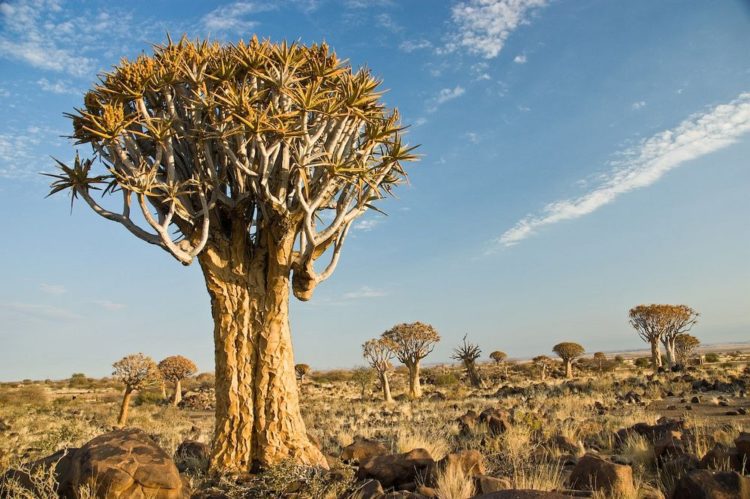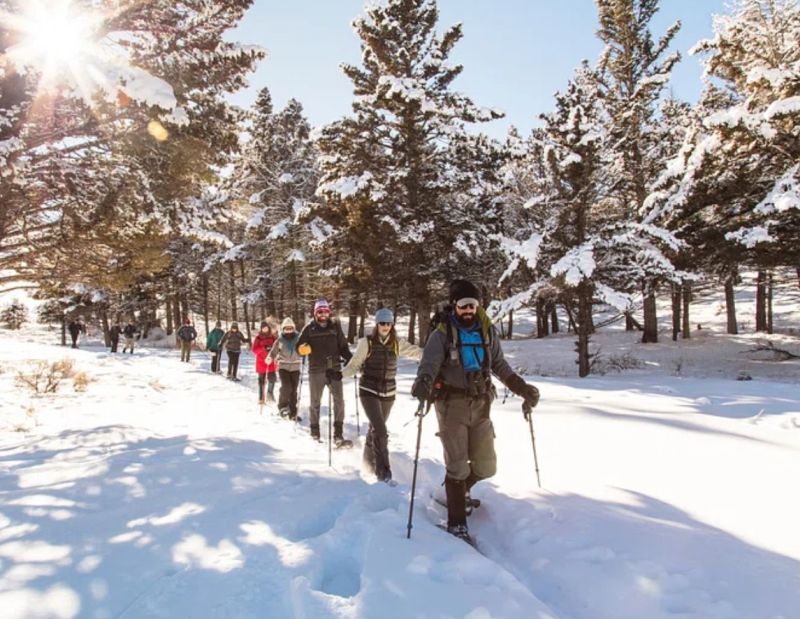The Quiver Tree Forest is located about 14 km northeast of the town of Keetmanshoop, on the road to the small village of Koës, in southern Namibia. Here grows, on a private farm, about 250 specimens of the quiver tree, or aloe dichotoma, which is a tall, branching species of aloe, indigenous to the Northern Cape region of South Africa, and parts of Southern Namibia. This area is a popular attraction due to the unique shape of aloe dichotoma.
The quiver tree is classified as a vulnerable species because its biggest threat is the global rising temperature and decreasing rainfall. However, the trees are fighting back by gradually shifting their distribution in the direction of the cooler regions in higher latitudes and higher altitudes. That in itself is a way of escaping the worst of the devastating heat and reducing the amount of moisture inevitably lost by evaporation from the surface of their leaves. The tree is protected by law in South Africa, and the Quiver Tree Forest is a national monument of Namibia.
The quiver tree is in fact not a tree, but rather a plant of the genus aloe, as evident from its scientific name, and one of some species of aloe that approaches tree proportions. The tree can grow 7 to 9 meters high. It has a stout stem that may grow to one meter in diameter and is covered with beautiful golden brown scales with sharp edges.
The uncommon crown contains various forked branches, which gives the species its name dichotoma, which means forked. Moreover, at the tip of each branch is a spiral rosette of pointed, thickly-succulent leaves, typical of all aloe plants. Contrasting the scaled trunk, the branches are even and are covered with a thin layer of whitish powder that supports to reflect the sun’s rays. Furthermore, somewhere between June and August, which is wintertime in the Southern Hemisphere, bright yellow flowers bloom drawing both birds and human visitors.
The quiver tree has a long history of beliefs that it will bring good luck to anybody that worships a tree and nurtures it. Like most other aloe species, quiver trees are not hard to grow from seed. They will grow best in regions with a climate close to that of their native deserts not too cold, and not too wet.
The quiver tree named assigned when native Bushmen used to make quivers from the branches of the tree. Aloe dichotoma doesn’t have real wood but a soft pulpy tissue that can be hollowed out with no trouble. Thus, one end of the hollow section is closed off with a piece of leather and used by the Bushmen to hold arrows.
The native Bushmen also used big hollowed-out trunks to store food and water. Moreover, the fibrous tissue of the trunk has a preservation effect as air passes through, letting the natives store perishables for longer durations. Apart from their historical habit of humans for arrow quivers, these trees hold wonderful ecological value.
Therefore, many insects, animals, and birds are captivated by the plentiful nectar of the flowers. The quiver tree is also a key nesting site for massive numbers of sociable weavers. The bird builds their nests between the branches, which gives the nestlings protection in the high temperatures, as well as from predators. Aloe dichotoma is cultivated for use in landscaping. The slow growth rate and relative rarity of the plant make it a predominantly expensive specimen.
Read More – Strawberry Crater – Reddish Cone Resemble a Giant Strawberry

















